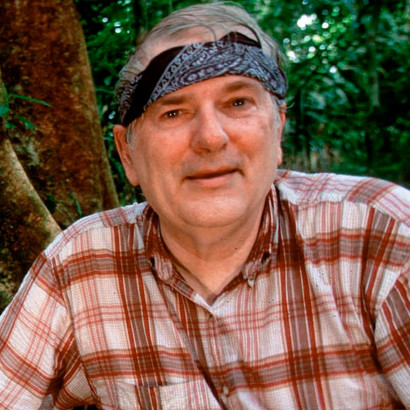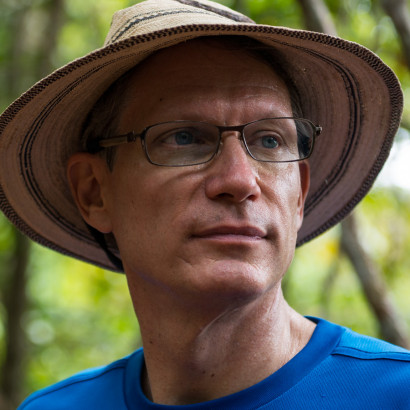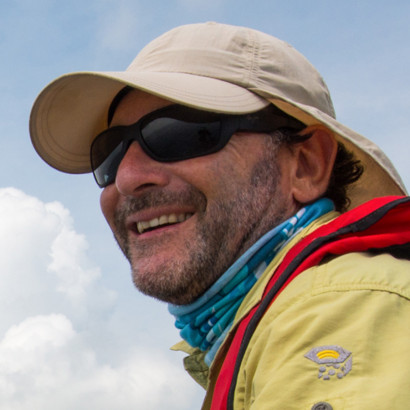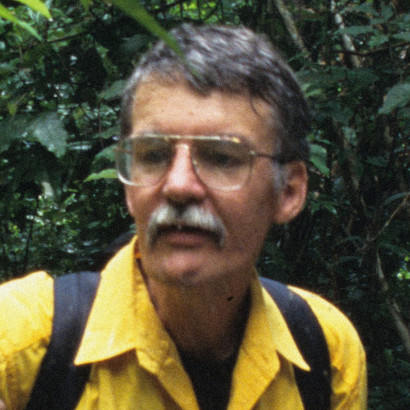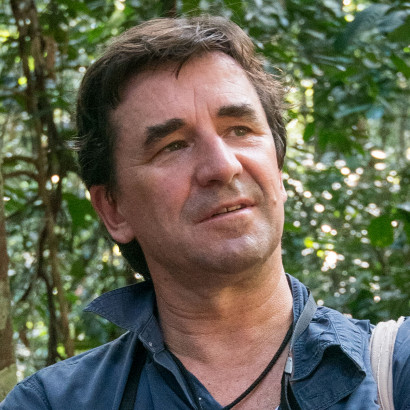Sezen, U., S.J. Worthy, M.N. Umana, S.J. Davies, S.M. McMahon & N.G. Swenson (accepted) Comparative transcriptomics of tropical woody plants supports fast and furious strategy along the leaf economics spectrum in lianas. 2022. Biology Open (Preprint online @BioRxiv). https://doi.org/10.1101/2021.07.06.451334
Kambach, S., R. Condit, S. Aguilar, H. Bruelheide, S. Bunyavejchewin, C-H. Chang-Yang, Y-Y. Chen, G. Chuyong, S.J. Davies, Sisira Ediriweera, Corneille E. N. Ewango, Edwino S. Fernando, N. Gunatilleke, S. Gunatilleke, S.P. Hubbell, A. Itoh, D. Kenfack, S. Kiratiprayoon, Y-C. Lin, J-R. Makana, M. Mohamad, N. Pongpattananurak, R. Pérez, L.J.V. Rodriguez, I-F. Sun, S. Tan, D. Thomas, J. Thompson, M. Uriarte, R. Valencia, C. Wirth, S.J. Wright, S-H. Wu, T. Yamakura, T.L. Yao, J. Zimmerman, N. Rüger. 2022. Consistency of demographic trade-offs across tropical forests. Journal of Ecology (in press) (Pre-print online @Authorea). 10.22541/au.163253541.10680169/v1
Zuleta, D., G. Arellano, H.C. Muller-Landau, S.M. McMahon, S. Aguilar, S. Bunyavejchewin, D. Cárdenas, C-H. Chang-Yang, A. Duque, D. Mitre, M. Nasardin, R. Pérez, I-F. Sun, T.L. Yao & S.J. Davies. 2022. Individual tree damage dominates mortality risk factors across six tropical forests. New Phytologist, 233 (2), 705-721. https://doi.org/10.1111/nph.17832
Gonzalez-Akre, E., C. Piponiot, M. Lepore, V. Herrmann, J.A. Lutz, J.L. Baltzer, C. Dick, G.S. Gilbert, F.L. He, M. Heym, A.I. Huerta, P. Jansen, D. Johnson, N. Knapp, K. Kral, D. Lin, Y. Malhi, S. McMahon, J.A. Myers, D. Orwig, D.I. Rodríguez-Hernández, S. Russo, J. Shue, X. Wang, A. Wolf, T. Yang, S.J. Davies & K.J. Anderson-Teixeira. 2022. allodb: An R package for biomass estimation at globally distributed extratropical forest plots. Methods in Ecology and Evolution, 13 (2), 330-338. https://doi.org/10.1111/2041-210X.13756
Piponiot, C., K.J. Anderson-Teixeira,, S.J. Davies,, D. Allen, N.A. Bourg, D.F.R.P. Burslem, D. Cárdenas, C-H. Chang-Yang, G. Chuyong, R. Condit, S. Cordell, H.S. Dattaraja, C.W. Dick, Á. Duque, S. Ediriweera, C. Ewango, Z. Ezedin, J. Filip, C. Giardina, T. Hart, A. Hector, R. Howe, C-F. Hsieh, S. Hubbell, F.M. Inman-Narahari, A. Itoh, D. Jánik, D. Kenfack,, K. Král, J.A. Lutz, J-R. Makana, S. McMahon, W. McShea, X. Mi, M. Mohamad, V. Novotný,, M.J. O'Brien, R. Ostertag, G. Parker, R. Pérez, H. Ren, G. Reynolds, M.D.M. Sabri, L. Sack, A. Shringi, S-H. Su, R. Sukumar, I-F. Sun, H.S. Suresh, D.W. Thomas, J. Thompson, M. Uriarte, J. Vandermeer, Y. Wang, I.M. Ware, G.D. Weiblen, T.J.S. Whitfeld, A. Wolf, T.L. Yao, M. Yu, Z. Yuan, J. Zimmerman, D. Zuleta, & H. Muller-Landau. 2022. Distribution of biomass dynamics in relation to tree size in forests across the world. New Phytologist. https://doi.org/10.1111/nph.17995
Zuleta, D., S.M. Krishna Moorthy, G. Arellano, H. Verbeeck & S.J. Davies (2022) Vertical distribution of trunk and crown volume in tropical trees. Forest Ecology and Management, 508, 120056. https://doi.org/10.1016/j.foreco.2022.120056
Anderson-Teixeira, K.J., V. Herrmann, C. Rollinson, B. Gonzalez, E.B. Gonzalez-Akre, N. Pederson, R. Alexander, C.D. Allen, R. Alfaro-Sánchez, T. Awada, J.L. Baltzer, P.J. Baker, S. Bunyavejchewin, P. Cherubini, J. Cooper, S.J. Davies, C. Dow, R. Helcoski, J. Kašpar, J. Lutz, E.Q. Margolis, J. Maxwell, S. McMahon, C. Piponiot, S. Russo, P. Šamonil, A. Sniderhan, A.J. Tepley, I. Vašíčková, M. Vlam & P. Zuidema (2021) Joint effects of climate, tree size, and year on annual tree growth derived from tree-ring records of ten globally distributed forests. Global Change Biology, 28 (1), 245-266. https://doi.org/10.1111/gcb.15934
Cushman, K. C., S. Bunyavejchewin, D. Cárdenas, R. Condit, S.J. Davies, A. Duque, S.P. Hubbell, S. Kiratiprayoon, S.K.Y. Lum & H.C. Muller-Landau. 2021. Variation in trunk taper of buttressed trees within and among five lowland tropical forests. Biotropica, 53, 1442– 1453. https://doi.org/10.1111/btp.12994
Arellano, G., D. Zuleta & S.J. Davies. 2021. Tree death and damage: A standardized protocol for frequent surveys in tropical forests. Journal of Vegetation Science, 32(1) https://doi.org/10.1111/jvs.12981
ForestPlots, Blundo, C.,.. S.J. Davies.. (or 150 authors) (2021) Taking the pulse of Earth's tropical forests using networks of highly distributed plots. Biological Conservation, 260, 108849- , https://doi.org/10.1016/j.biocon.2020.108849
Saatchi, S., M. Longo, L. Xu, Y. Yang, H. Abe, M. André, J.E. Aukema, N. Carvalhais, H. Cadillo-Quiroz, G.A. Cerbu, J.M. Chernela, K. Covey, L.M. Sánchez-Clavijo, I.V. Cubillos, S.J. Davies, V. De Sy, F. De Vleeschouwer, A. Duque, A.M.S. Durieux, K. De Avila Fernandes, L.E. Fernandez, V. Gammino, D.P. Garrity, D.A. Gibbs, L. Gibbon, G.Y. Gowae, M. Hansen, N.L.Harris, S.P. Healey, R.G. Hilton, C.M. Johnson, R. Sufo Kankeu, N.T. Laporte-Goetz, H. Lee, T. Lovejoy, M. Lowman, R. Lumbuenamo, Y. Malhi, J-M.M.A. Martinez, C. Nobre, A. Pellegrini, J. Radachowsky, F. Román, D. Russell, D. Sheil, T.B. Smith, R.G.M. Spencer, F. Stolle, H. Lestari Tata, D. del Castillo Torres, R.M. Tshimanga, R. Vargas, M. Venter, J. West, A. Widayati, S.N. Wilson, S. Brumby & A.C. Elmore. 2021. Detecting vulnerability of humid tropical forests to multiple stressors. One Earth, 4, 7, 988-1003. https://doi.org/10.1016/j.oneear.2021.06.002
Pivovaroff, A.L., B.T. Wolfe, N. McDowell, B. Christoffersen, S. Davies, L.T. Dickman, C. Grossiord, R.T. Leff, A. Rogers, S.P. Serbin, S.J. Wright, J. Wu, C. Xu & J.Q. Chambers. 2021. Hydraulic architecture explains species moisture dependency but not mortality rates across a tropical rainfall gradient. Biotropica, 53, 1213-1225. https://doi.org/10.1111/btp.12964
Wiegand, T., X. Wang, K.J. Anderson-Teixeira,, N. Bourg, M. Cao, X. Ci, S.J. Davies, Z. Hao,, R. Howe, W.J. Kress, J. Lian, J. Li, L. Lin, Y. Lin, K. Ma, W. McShea, X. Mi, S-H. Su, I-F. Sun, A. Wolf, W. Ye & Andreas Huth. 2021. Consequences of spatial patterns for coexistence in species rich plant communities. Nature, Ecology & Evolution 5, 965–973.
Basset, Y., L.R. Jorge, P.T. Butterill, G.P.A. Lamarre, C. Dahl, R. Ctvrtecka, S. Gripenberg, O.T. Lewis, H. Barrios, J.W. Brown, S. Bunyavejchewin, B.A. Butcher, A.I. Cognato, S.J. Davies, O. Kaman, P. Klimes, M. Knížek, S.E. Miller, G.E. Morse, V. Novotny, N. Pongpattananurak, P. Pramual, D.L.J. Quicke, W. Sakchoowong, R. Umari, E.J. Vesterinen, G. Weiblen, S.J. Wright & Segar, S.T. 2021. Host specificity and interaction networks of insects feeding on seeds and fruits in tropical rainforests. Oikos, 130 (9), 1462-1476. https://doi.org/10.1111/oik.08152
Wills, C., B. Wang, S. Fang, Y. Wang, Y. Jin, J. Lutz, J. Thompson, K.E. Harms, S. Pulla, B. Pasion, S. Germain, H. Liu, J. Smokey, S-H. Su, N. Butt, C. Chu, G. Chuyong, C-H. Chang-Yang, H.S. Dattaraja, S. Davies, S. Ediriweera, S. Esufali, C.D. Fletcher, N. Gunatilleke, S. Gunatilleke, S., et al. 2021. Interactions between all pairs of neighboring trees in 16 forests worldwide reveal details of unique ecological processes in each forest, and provide windows into their evolutionary histories. Plos Computational Biology, 17(4) e1008853 https://doi.org/10.1371/journal.pcbi.1008853
Kunert, N., J. Zailaa, V. Herrmann, H. Muller-Landau, S.J. Wright, R. Perez, S. McMahon, R. Condit, S. Hubbell, L. Sack, S. Davies & K. Anderson-Teixeira. 2021. Leaf turgor loss point shapes local and regional scale distribution of broadleaf evergreen but not deciduous tropical rainforest trees in relation to moisture. New Phytologist 230 (2), 485-496. https://doi.org/10.1111/nph.17187
Arellano, G., D. Zuleta & S.J. Davies. 2021. Tree death and damage: a standardized protocol for frequent surveys in tropical forests. Journal of Vegetation Science. 32 (1), e12981.
Luskin M.S., D.J. Johnson, K. Ickes, T.L. Yao & S.J. Davies. 2021. Wildlife disturbances as a source of conspecific negative density-dependent mortality in tropical trees. Proceedings of the Royal Society, B, 288: 20210001. https://doi.org/10.1098/rspb.2021.0001
Russo, S. S.M. McMahon, M. Detto, S.J. Wright, R.S. Condit, S.J. Davies, S. Bunyavejchewin, C.H. Chang-Yang, C.E.N. Ewango, C. Fletcher, R.B. Foster, C.V.S. Gunatilleke, I.A.U.N. Gunatilleke, T. Hart, C-F. Hsieh, S.P. Hubbell, A. Itoh, A.R. Kassim, Y.C. Lin, J.-R. Makana, P. Ong, A. Sugiyama, I-F. Sun, S. Tan, J. Thompson, T. Yamakura, S.L. Yap, J.K. Zimmerman. 2021. The interspecific growth-mortality trade-off is not a general framework for understanding tropical forest community structure. Nature Ecology & Evolution, 5 (2), 174–183. https://doi.org/10.1038/s41559-020-01340-9
Kohyama, T., M. Potts, T. Kohyama, K. Niiyama, T.L. Yao, S.J. Davies & D. Sheil. 2020. Trade-off between standing biomass and productivity in species-rich tropical forest: evidence, explanations and implications. Journal of Ecology, 108 (6), 2571-2583. https://doi.org/10.1111/1365-2745.13485
Sullivan, M.J.P., S.L. Lewis, .. S. Davies, .. & O.L. Phillips. 2020. Long-term thermal sensitivity of Earth’s tropical forests. Science, 368, 869-874.
Weemstra, M., K.G. Peay, S.J. Davies, M. Mohamad, A. Itoh, S. Tan & S.E. Russo. 2020. Lithological constraints on resource economies shape the mycorrhizal composition of a Bornean rain forest. New Phytologist, 228, 253-268.
Koven, C.D., R.G. Knox, R.A. Fisher, J. Chambers, B.O. Christoffersen, S.J. Davies, M. Detto, M.C. Dietze, B. Faybishenko, J. Holm, M. Huang, M. Kovenock, L.M. Kueppers, G. Lemieux, E. Massoud, N.G. McDowell, H.C. Muller-Landau, J.F. Needham, R.J. Norby, T. Powell, A. Rogers, S.P. Serbin, J.K. Shuman, A.L.S. Swann, C. Varadharajan, A.P. Walker, S.J. Wright & C. Xu. 2020. Benchmarking and parameter sensitivity of physiological and vegetation dynamics using the Functionally Assembled Terrestrial Ecosystem Simulator (FATES) at Barro Colorado Island, Panama. Biogeosciences, 17(11): 3017-3044. https://doi.org/10.5194/bg-17-3017-2020
Segnitz, R.M., S.E. Russo, S.J. Davies & K.G. Peay. 2020. Ectomycorrhizal fungi drive positive phylogenetic plant–soil feedbacks in a regionally dominant tropical plant family. Ecology, 101 (8), e03083. https://doi.org/10.1002/ecy.3083
Zuleta, D., S.E. Russo, M. Detto, A. Barona, D. Cardenas, N. Castaño, S.J. Davies, S. Sua, B.L. Turner & A. Duque. 2020. Importance of topography for tree species habitat distributions in a terra firme forest in the Colombian Amazon. Plant and Soil, 450 (1), 133-149. https://doi.org/10.1007/s11104-018-3878-0
Rutishauser, E., S. Wright, R. Condit, S. Hubbell, S.J. Davies, & H. Muller-Landau. 2020. Testing for changes in biomass dynamics in large-scale forest datasets. Global Change Biology 26(3): 1485-1498. https://doi.org/10.1111/gcb.14833.
Xu, H, M. Detto, S. Fang, R. Chazdon, Y. Li1, B.C.H. Hau, G.A. Fischer, G.D. Weiblen, J.A, Hogan, J.K. Zimmerman, M. Uriate, J. Thompson, J. Lian, K. Cao, D. Kenfack, A. Alonso, P. Bissiengou, H.R. Memiaghe, R. Valencia, S.L. Yap, S.J. Davies, X. Mi & T.L. Yao. 2020. Soil nitrogen concentration mediates the relationship between leguminous trees and neighbor diversity in tropical forests. Communications Biology 3 (1), 1-8. https://doi.org/10.1038/s42003-020-1041-y
Fung, T., Chisholm, R.A., Anderson‐Teixeira, K., Bourg, N., Brockelman, W.Y., Bunyavejchewin, S., Chang‐Yang, C.-H., Chitra‐Tarak, R., Chuyong, G., Condit, R., Dattaraja, H.S., Davies, S.J., Ewango, C.E.N., Fewless, G., Fletcher, C., Gunatilleke, C.V.S., Gunatilleke, I.A.U.N., Hao, Z., Hogan, J.A., Howe, R., Hsieh, C.-Fu., Kenfack, D., Lin, Y.C., Ma, K., Makana, J.-R., et al. 2019. Temporal population variability in local forest communities has mixed effects on tree species richness across a latitudinal gradient. Ecology Letters, 23 (1), 160-171 https://doi.org/10.1111/ele.13412
Bunyavejchewin, S., A. Sinbumroong, B.L. Turner & S.J. Davies. 2019. Natural disturbance and soils drive diversity and dynamics of seasonal dipterocarp forest in Southern Thailand. Journal of Tropical Ecology 35(3): 95-107.
McShea, W., R. Sukmasuang, D. Erickson, V. Herrmann, D. Ngoprasert, N. Bhumpakphan & S.J. Davies. 2019. Metabarcoding reveals diet diversity in an ungulate community in Thailand. Biotropica 51 (6), 923-937.
Menge, D.N.L., R.A. Chisholm, S.J. Davies, et al. 2019. Rarity of nitrogen-fixing trees in Asia suggests lower potential for carbon sequestration. Journal of Ecology 107 (6), 2598-2610 https://doi.org/10.1111/1365-2745.13199.
Luskin, M.S., K. Ickes, T.L. Yao & S.J. Davies. 2019. Wildlife differentially affect tree and liana regeneration in a tropical forest: An 18-year study of experimental terrestrial defaunation versus artificially abundant herbivores. Journal of Applied Ecology, 56(6): 1379-1388. https://doi.org/10.1111/1365-2664.13378
Chave, J., S.J. Davies, O.L. Phillips, S.L. Lewis, P. Sist, D. Schepaschenko, J. Armston, T.R. Baker, D. Coomes, M. Disney, L. Duncanson, B. Hérault, N. Labrière, V. Meyer, M. Réjou-Méchain, K. Scipal & S. Saatchi. 2019. Ground data are essential for biomass remote sensing missions. Surveys in Geophysics, 40 (4): 863-880. https://doi.org/10.1007/s10712-019-09528-w
McMahon, S.M., G. Arellano & S.J. Davies. 2019. The importance and challenges of detecting changes in forest mortality rates. Ecosphere 10 (2), e02615.
Arellano, G., N. García-Medina, S. Tan, M. Mohamad & S.J. Davies. 2019. Crown damage and the mortality of tropical trees New Phytologist 221(1): 169-179. doi:10.1111/nph.15381.
Zemunik, G. S.J. Davies & B.L. Turner. 2018. Soil drivers of local-scale tree growth in a lowland tropical forest. Ecology 99 (12), 2844-2852
Labrière, N. S. Tao, J. Chave, K. Scipal, T. Le Toan, N. Barbier, T. Casal, S.J. Davies, A. Ferraz, B. Hérault, G. Jaouen, D. Kenfack, S.L. Lewis, Y. Malhi, M. Réjou-Méchain, L. Villard, G. Vincent, S. Saatchi. 2018. In situ data from the TropiSAR and AfriSAR campaigns as a support to upcoming spaceborne biomass missions. IEEE JSTARS Special Issue on Forest Structure Estimation in Remote Sensing, 11(10): 3617 - 3627.
Johnson, D.J., J. Needham, C. Xu, E.C. Massoud, S.J. Davies, K.J. Anderson-Teixeira, S. Bunyavejchewin, J.Q. Chambers, C.H. Chang-Yang, J.M. Chiang, G.B. Chuyong, R. Condit, S. Cordell, C. Fletcher, C. P. Giardina, T.W. Giambelluca, N. Gunatilleke, S. Gunatilleke, C.F. Hsieh, S. Hubbell, F. Inman-Narahari, A.R. Kassim, M. Katabuchi, D. Kenfack, C. M. Litton, S. Lum, M. Mohamad, M. Nasardin, P.S. Ong, R. Ostertag, L. Sack, N. G. Swenson, I. F. Sun, S. Tan, D. W. Thomas, J. Thompson, M.N. Umana, M. Uriarte, R. Valencia, S. Yap, J. Zimmerman, N.G. McDowell & S.M. McMahon. 2018. Climate sensitive size-dependent survival in tropical trees. Nature Ecology & Evolution 2, 1436-1442.
Kurten, E., S. Bunyavejchewin & S.J. Davies. 2018. A dipterocarp-dominated forest in a seasonally dry climate exhibits annual reproduction. Journal of Ecology. 106 (1), 126-136.
Hogan, J., J. Zimmerman, J. Thompson, M. Uriarte, N. Swenson, R. Condit, S. Hubbell, D. Johnson, I. Sun, C.-H. Chang-Yang, S.-H. Su, P. Ong, L. Rodriguez, C. Monoy, S. Yap, and S.J. Davies. 2018. The frequency of cyclonic wind storms shapes tropical forest dynamism and functional trait dispersion. Forests 9:404.
Kurten EL, Bunyavejchewin S, Davies SJ. Phenology of a dipterocarp forest with seasonal drought: Insights into the origin of general flowering. J Ecol. 2018; 106:126–136. https://doi.org/10.1111/1365-2745.12858
Zuleta, D., Duque, A. , Cardenas, D. , Muller‐Landau, H. C. and Davies, S. J. (2017), Drought‐induced mortality patterns and rapid biomass recovery in a terra firme forest in the Colombian Amazon. Ecology, 98: 2538-2546. doi:10.1002/ecy.1950
Kang Min Ngo, Stuart Davies, Nik Faizu Nik Hassan & Shawn Lum (2017) Resilience of a forest fragment exposed to long-term isolation in Singapore, Plant Ecology & Diversity, 9:4, 397-407, DOI: 10.1080/17550874.2016.1262924

